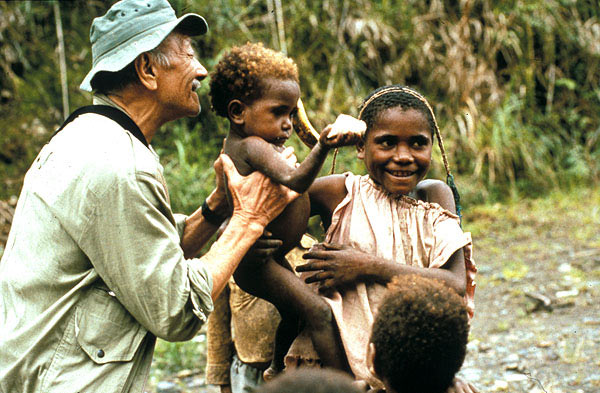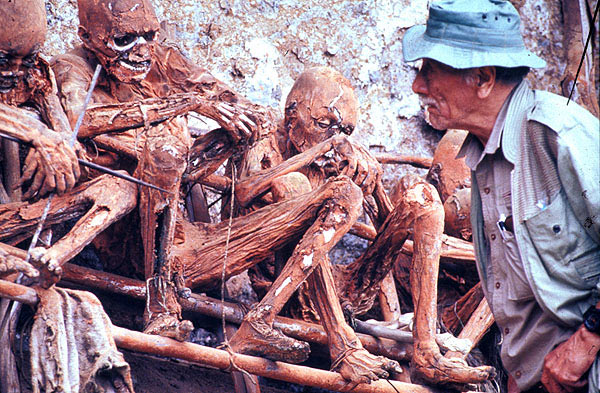Max Chi-Wei Liu
In 1993, the painter Mr. Max Liu was commissioned by the Taiwan Art Foundation to team up with his son, Liu Nin-sheng, and others to collect 240 cultural objects from Papua New Guinea in Oceania. Larger objects include the statues of eudemons and canoes, and the smaller ones shaman certificates of completion.
The now late Max Liu believed that if people wanted to research modern paintings, they must first research primitive culture, and then devote themselves to cultural anthropology. Fieldwork in New Guinea meant an expensive trip. "In Taiwan, before we set off, we had to prepare umbrellas, tents, sleeping bags, mosquito nets, mess gear, portable generators, and a medicine chest, including medicine to treat malaria. The team members totaled four. However, the luggage we brought weighed over 200 kilograms. When we traveled to remote village we had to prepare food for one week. When we visited places at high altitude, porters carried our luggage on their backs, each one carrying 25 kilograms, so we had to hire about nine porters. Due to the poor infrastructure and insufficient research data, collecting and packing samples, preparing food and replenishing water, and hiring porters was a complicated process. The fortunate thing was that the people there rarely saw tourists, so they did not have a bias toward outsiders. Therefore, everything went smoothly. We traveled for nearly two months and encountered mosquitoes, pests and vipers in the forests and valleys."
Max Liu donated all of the collected objects from Papua New Guinea to the National Museum of Natural Science which presented the "Papua Primitive Art Exhibition: Journey to Papua New Guinea" in 1994. This exhibition not only displayed the items donated by Mr. Liu, but also presented the culture and natural history of Oceania.

